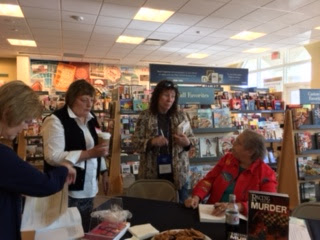By Monette Michaels
Member, Speed City Sisters in Crime
 |
| *Image open source license for reuse |
I’m often asked whether I’m a pantser or a plotter when it comes to writing. I’m neither ... and both.
When I began my writing career, I tried to be a plotter. I’d start my novels with pages and pages of beautifully outlined plot points and scenes. But once I got past the first chapter or so, I’d realize I wasn’t on point with my outline, that I had gone off in a new direction. Instead of continuing to write, I’d stop, revise the outline using the new direction in which my muse or characters had taken me, and then pick up where I left off in my novel. After stopping and rewriting/revising my outlines for several books, I finally just said to “hell with it.” I spent more time revising outlines than writing. What was worse – the outlines stifled my creativity. I had to find another way.
So that made me a pantser, right? Wrong.
Being A-type, I still needed some structure. There had to be a starting and an end point. And I soon realized I needed certain things to happen along the way. I didn’t need to know every scene that would occur in the book, but did have to assure that my characters wouldn’t end up meandering all over creation and getting stuck in the middle.
My solution to this “not-a-plotter, but not-quite-a-pantser” dilemma came after taking some writing classes. The solution? The plot-point method.
In the plot-point method, all a writer needs to know is where to start (the set up) followed by the first main plot point, the inciting incident, where your main character is forced outside his or her comfort zone and forced on a journey to attain a goal. Then after a series of scenes and complications (the middle), there is the second main plot point, the crisis, where the main character is forced to make a decision in an effort to attain his/her goal and which then leads to the final climactic scenes and, eventually, the end.
That’s two plot points. Very important ones to be sure. The bulk of the novel is then made up of scenes that turn on complications facing the character(s) in attaining his/her goal(s).
This simple method allows you the room to let your novel evolve rather than follow a strict outline. And, if your characters are anything like mine, they are fairly bossy and know what needs to happen next.
Thus, when someone asks me whether I am a pantser or a plotter, I tell them I’m a quasi-pantser. Maybe you can be a quasi-pantser, too.
Monette Michaels is a Speed City SINC member who has over twenty-five published novels and is best known for her romantic thriller series, Security Specialists International, and her science fiction romance series, The Prime Chronicles. She also has written paranormal romantic suspense under the pen name Rae Morgan.
 Speed City Sisters in Crime member Penny Davis newest book has just been
released and is now available. Set in Savannah, Journey Girls is an
unforgettable story about the power of women who are bound together by
generations of friendship.
Speed City Sisters in Crime member Penny Davis newest book has just been
released and is now available. Set in Savannah, Journey Girls is an
unforgettable story about the power of women who are bound together by
generations of friendship.












